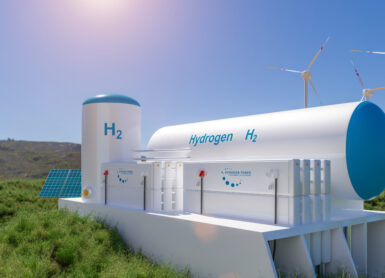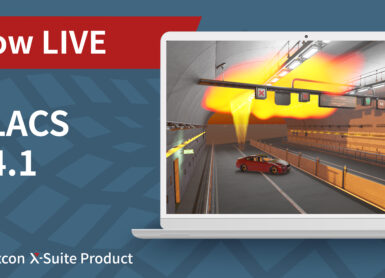

Gexcon is pleased to announce that we will present, sponsor, and exhibit at the 2023 AIChE Spring Meeting and 19th Global Congress on Process Safety (GCPS). The event will be held on March 12-16 at Hilton Americas, George R. Brown Convention Center, Houston, Texas, United States.
Gexcon US CEO – Principal Engineer Scott G. Davis, PhD, PE, CFEI, will present two papers with the following details.
PRESENTATION 1
Title: Ammonia Safety: Emergency Ventilation Design for Machinery Rooms
Author: Scott G. Davis, Derek M. Engel, John Pagliaro
Presenter: Scott G. Davis
Location: George R. Brown Convention Center – 370
Date & Time: Monday, March 13 | 3:30 – 4:00 PM CST
Abstract (click to expand):
The ammonia refrigeration industry has a historically good safety record; hence, there have been few instances of ammonia release resulting in ignition events. However, when such events do occur in confined enclosures, such as machinery rooms, devastating consequences can occur.
The present study uses computational fluid dynamics (CFD) to quantitatively evaluate the performance of various emergency ventilation designs and emergency ventilation rates for controlling the flammability hazard during ammonia releases in machinery rooms. A wide range of emergency ventilation rates was considered, in addition to a range of leak location/direction combinations. In total, approximately 2000 CFD simulations were performed.
Emergency ventilation performance was quantitatively evaluated based on the system’s ability to limit the size of the flammable ammonia/air cloud to less than 25% of the room volume during a leak. The results of this study demonstrate that the release characteristics of saturated ammonia liquid, subcooled ammonia liquid, and superheated ammonia vapor differ quite substantially.
Required emergency ventilation rates for ammonia machinery rooms have conventionally been provided as an equivalent of 30 Air Changes per Hour (ACH) of the machinery room. However, the results of the present study demonstrate that emergency ventilation cannot be determined by ACH alone, and the ventilation must be scaled to the leak or vapor generation rate.
The paper presents necessary guidance to limit the size of the flammable ammonia/air cloud to less than 25% of the room volume during an emergency unintentional release.
PRESENTATION 2
Title: Protecting Gasoline Storage Tanks from Lightning: Lessons Learned from a Recent Gasoline Storage Tank Explosion and Fire
Author: Scott G. Davis, Derek M. Engel, John Pagliaro
Presenter: Scott G. Davis
Location: Hilton Americas – Houston – Ball Room of the Americas A-F (Level 2)
Date & Time: Wednesday, March 15 | 1:45 – 2:15 PM CST
Abstract (click to expand):
This paper presents a recent investigation into an explosion and ensuing fire that occurred in an unleaded gasoline storage tank during a lightning storm.
The above-ground storage tank used to store unleaded gasoline had an internal floating roof design, meaning the tank had an internal floating roof covered by a geodesic dome. As it is typical for volatile substances such as gasoline stored in internal floating roof tanks, fuel vapors will eventually migrate around the internal floating roof through several pathways, and flammable vapors were present in the headspace.
The tank was equipped with a nitrogen blanketing system that was intended to prevent a flammable atmosphere in the tank headspace by supplying nitrogen and thus preventing air ingress during periods of product discharge and thermal inbreathing. The tank was also equipped with a fixed foam suppression system attached to the geodesic dome for early fire suppression efforts. In the early evening during a thunderstorm, an explosion occurred within the headspace that blew the geodesic dome roof off the tank and led to an ensuing fire. The explosion damaged the fixed foam suppression system; hence early suppression efforts were delayed on the tank.
The paper presents the results of a detailed investigation analysis into the cause of the incident, which includes a detailed analysis of the lightning strike. This includes video footage from several cameras showing that ignition of the flammable vapors within the tank headspace occurred within a second of an indirect lightning strike (i.e., lightning that did not directly strike the tank).
The study will present lessons learned regarding the failures associated with the nitrogen blanketing system and the fixed foam suppression system and also provide critical recommendations to help prevent future incidents.
We hope you can stop by Booth 614 and connect with us if you attend. We would love to hear about your work and exchange information and knowledge.
You can contact our representatives at this event and arrange to meet them by clicking the button below.
Other News

Gexcon to present, sponsor and exhibit at the 2024 Spring Meeting and 20th Global Congress on Process Safety.
Gexcon is pleased to announce that we will present, sponsor, and exhibit at the 2024 AIChE Spring Meeting and 20th Global Congress on Process Safety (GCPS). The event will be held on March 24 -28 at New Orleans Ernest N. Morial Convention Center,…
News
Gexcon collaborate with Global R & D to present webinar | Understanding Hydrogen for Safer, Better Design and Operation.
Gexcon is pleased to announce that we will collaborate with Global R & D to deliver a knowledge-sharing webinar. Our esteemed colleague in Singapore, Richard Lee, will deliver this webinar entitled “Understanding Hydrogen for Safer, Better Design and Operation” which aims to…
News
FLACS 24.1 is now live
Gexcon’s latest release, FLACS 24.1, marks a key advancement in the realms of geometry handling and fire safety simulation.
FLACS-CFD News